
Can we survive without air?
 17. 02. 2020
17. 02. 2020

Science tells us that the human body can survive without oxygen for only a few minutes. But some people resist this accepted truth.
The following story is featured in BBC Future's "Best of 2019" collection.
There was a terrible crunching sound as the thick cable connecting Chris Lemons to the ship above broke. This vital umbilical cord, leading into the world above, brought him strength, communication, warmth, and air to his diving suit 100 meters (328 feet) below sea level.
While his colleagues remember this terrible noise of a collapsing connection to life, Lemons heard nothing. It hit him at that moment on the metal underwater structure he was working on, and then he was thrown down toward the seabed. His connection to the ship above him was gone, along with any hope that he could return to it. Most importantly, he also lost his air source, leaving only six or seven minutes of emergency oxygen supply. Over the next 30 minutes, Lemons experienced something on the bottom of the North Sea that few people had tried: he ran out of air.
"I'm not sure I was in full control of the situation," recalls Lemons. "I fell my back on the seabed and was surrounded by the omnipresent darkness." I knew I had very little gas on my back and my chances of getting out of it were slim. Some resignation came to me. I remember sadness overwhelming me. ”
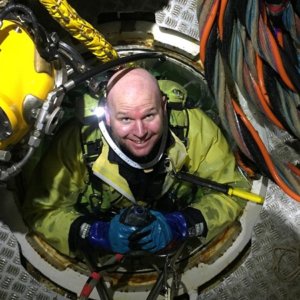
At the time of the accident, Chris Lemons practiced saturation diving for about one and a half years
The Lemons were part of a saturation diving team that was repairing the well line at Huntington Oil Field, about 127 miles (204 km) east of Aberdeen on the east coast of Scotland. To do this, divers must spend a month of life, including sleep and food, in specially designed chambers aboard a diving ship, separated from the rest of the crew by metal and glass. In these 6-meter tubes, three divers acclimatize to the pressure they want to experience underwater.
It's an unusual form of isolation. Three divers can see and talk to their colleagues outside the room, but otherwise they are cut off from them. The members of each team are totally dependent on each other - decompression before leaving the hyperbaric chamber takes six days, as well as the availability of any outside help.
I got a sort of resignation, I remember being saddened in a way - Chris Lemons
"This is a very special situation," says Lemons, 39, who is old. “You live on a ship surrounded by a lot of people who are separated only by a layer of metal, but completely isolated from them. In a way, it is faster to return from the Moon than from the depths of the sea. ”
Decompression is necessary, when breathing underwater, the diver's body and tissues are quickly filled with dissolved nitrogen. When emerging from the depths, the nitrogen then returns to its gaseous state due to lower pressure, and bubbles can form in the tissues during rapid exit from the depths, which the body is not able to absorb. If this happens too quickly, it can cause painful tissue and nerve damage, and even if bubbles form in the brain, it can lead to death. This condition is known as "caisson disease".
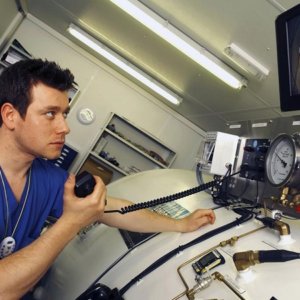
Divers who spend a long time in deep water must then decompress themselves in a hyperbaric chamber for several days
However, the work of these divers is still very risky. The worst thing for Lemons was the long separation from his fiancée Morag Martin and their common home on the west coast of Scotland. On September 18, 2012, Chris Lemons and his two colleagues Dave Youasu and Duncan Allcock started quite normally. The three climbed into the diving bell, which was lowered from the Bibby Topaz to the seabed for repairs.
"In many ways it was just an ordinary day," Lemons says. He was not as experienced as his two colleagues, but had been sinking for eight years. He devoted himself to saturating diving for a year and a half and took part in nine deep dives. "The sea was a bit stormy on the surface, but it was quite calm underwater."
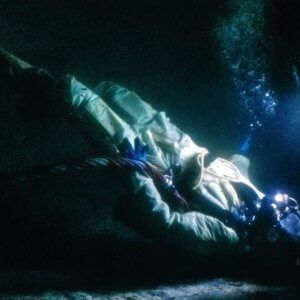
Chris Lemons spent 30 minutes on the seabed after the rope connecting him to the ship above him broke in a stormy sea
However, the stormy sea set off a chain of events that nearly cost Lemons life. Under normal circumstances, dive boats use computer-controlled navigation and propulsion systems - known as dynamic positioning - to stay above the dive site while divers are in the water. But when Lemons and Youasa began repairing the pipes underwater and Allcock supervised them from the bell, Bibby Topaz's dynamic positioning system suddenly failed. The ship quickly began to move away from the course. An alarm sounded in the divers' communication system on the sea floor. Lemons and Youasa were instructed to return to the bell. But when they began to follow their "umbilical cords," the ship was already above the tall metal structure they were working on, which meant they had to get over it.
"It was a special moment when we looked into each other's eyes," said Chris Lemons.
However, as they approached the top, Lemons' jumper cable jammed behind a piece of metal protruding from the structure. Before he could release him, the wave-drifting ship pulled hard against him and pressed him against the metal pipes. "Dave realized something was wrong and turned to come back to me," says Lemons, whose story was immortalized in the feature documentary Last Breath. "It was a strange moment when we looked into each other's eyes." He tried desperately to reach me, but the ship pulled him away. Before I understood the situation, I ran out of air because the cable was firmly wedged. "
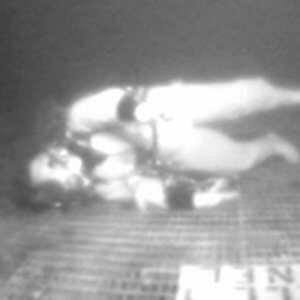
Aboard the ship helplessly watched the remote-controlled live craft transmit Lemons' steady movements from a depth of 100 meters
The voltage applied to the cable had to be enormous. A tangle of hoses and electrical wires with a rope passing through the center burst as the boat rises. The Lemons instinctively turned the knob on their helmet to release oxygen from the emergency tank on their back. But before he could do anything else, the rope broke, sending him back to the seabed. Miraculously, Lemons managed to rise upright in the impenetrable darkness, feeling back toward the structure, climbing up again, hoping to see the bell and get to safety.
Without oxygen, the human body can survive for only a few minutes before the biological processes that nourish its cells begin to fail
"When I got there, the bell was out of sight," Lemons says. "I decided to calm down and save the little gas I had." I only had about six to seven minutes of emergency gas on my back. I didn't expect anyone to save me, so I curled up. "
Without oxygen, the human body can survive for only a few minutes before the biological processes feeding its cells begin to fail. The electrical signals that drive neurons in the brain decrease and eventually stop completely. "Oxygen loss is usually the end," says Mike Tipton, Head of Extreme Environmental Laboratory at Portsmouth University, UK. "The human body does not have a large supply of oxygen - maybe a few liters." How you use it depends on your metabolic rate. "
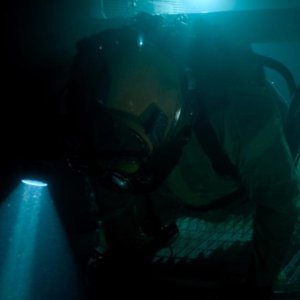
The human body is able to survive in peace without oxygen for only a few minutes and even less in stress or sports
An adult at rest usually consumes 1/5 to 1/4 liter of oxygen per minute. During intensive exercise, this value can be increased up to four liters. "Stress or panic can also increase metabolic rate," adds Tipton, who studied long-term survivors underwater without air.
They watched helplessly as Lemons' movements stopped and the signs of life ceased
Aboard Bibby Topaz, the crew desperately tried to manually navigate the ship back to its original position to rescue a lost colleague. As they moved on and on, they launched at least a remote-controlled submarine, hoping to find him. When she found him, they just watched helplessly on the camera transmission with Lemons' ceasing movements until he stopped showing signs of life. "I remember sucking the last of the air out of the tank on my back," says Lemons. "Sucking gas down requires more effort." I felt like I was just about to fall asleep. It wasn't annoying, but I remember being angry and apologizing to my fiancé Morag. I was angry about the pain I would cause other people. Then there was nothing. "
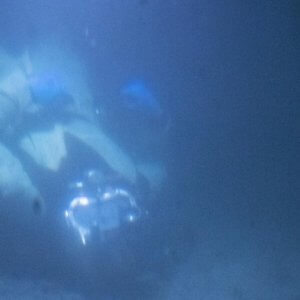
The cold water and the additional oxygen that had dissolved in Lemons' blood during his work helped him survive for so long without air
It took about 30 minutes for Bibby Topaz's crew to restart the dynamic positioning system to regain control of the vessel. When Youasa reached Lemons on an underwater structure, his body was motionless. With all his might, he pulled his colleague back into the bell and handed it to Allcock. He was blue and not breathing when his helmet was removed. Allcock instinctively gave him two mouth-to-mouth resuscitation breaths. Lemons gasped miraculously and regained consciousness.
Common sense says that after such a long time spent at the bottom of the sea, he should be dead
"I felt very dazed and flashed, but otherwise I don't have many clear memories to wake up," Lemons says. “I remember Dave sitting down on the other side of the bell, looking exhausted, and I didn't know why. "Only a few days later did I realize the gravity of the situation."
Almost seven years later, Lemons still doesn't understand how he managed to survive so long without oxygen. Common sense says that after such a long time spent at the bottom of the sea, he should be dead. However, it seems likely that the cold water of the North Sea played a role here - at a depth of about 100 meters, the water was probably less than 3 ° C (37 ° F). Without the hot water flowing through the "umbilical cord" and warming his suit, his body and brain cooled quickly.
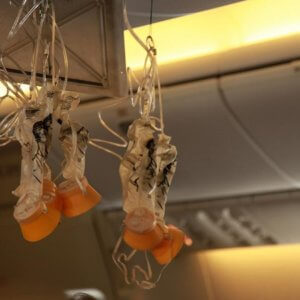
Sudden pressure loss on an aircraft may cause difficulty breathing thin air. Therefore, oxygen masks are available
"Rapid cooling of the brain can prolong oxygen-free survival," Tipton says. “If you lower the temperature by 10 ° C, the metabolic rate will drop by 30-50%. Lowering the brain temperature to 30 ° C may increase the survival time from 10 to 20 minutes. If you cool the brain to 20 ° C, you can get up to an hour. ”
The compressed gas that saturating divers usually breathe could have given Lemons more time. During the breathing of high levels of compressed oxygen, it can dissolve in the bloodstream, which gives the body additional reserves to pump it.
In a state of hypoxia
Divers are people who are most likely to experience sudden interruptions in air supply. This can also happen in many other situations. Firefighters often rely on breathing equipment to enter smoky buildings. Oxygen masks are also used by fighter pilots flying at high altitudes. Oxygen deficiency, known as hypoxia, can affect many other people in less extreme situations. Mountaineers experience low oxygen levels in the high mountains, which is often attributed to many accidents. As oxygen levels drop, brain function deteriorates, leading to poor decisions and confusion.
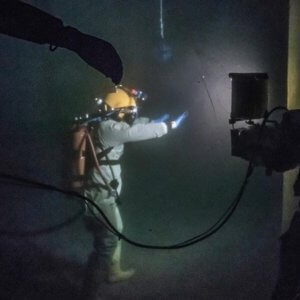
Chris Lemons' extraordinary story of survival has shot a feature documentary called Last Breath
Patients undergoing surgery often experience mild hypoxia, and this is believed to affect their recovery. Stroke leading to cell death and life-long damage is also caused by oxygen deficiency in the patient's brain.
"There are many diseases where hypoxia is the last phase," Tipton says. "One of the things that happens is that hypoxic people begin to lose peripheral vision and ultimately look at only one point." This is considered to be the reason people just before they say they saw light at the end of the tunnel. "
"Children and women are more likely to survive because they are smaller and their bodies tend to cool much faster" - Mike Tipton
Lemons himself survived the time spent without oxygen without major injury. He found only a few bruises on his feet after his suffering. But his survival is not so unique. Tipton has studied 43 cases of people who have been underwater for a long time in the medical literature. Four of them recovered, including a two-and-a-half-year-old girl who survived at least 66 minutes spent underwater.
“Children and women are more likely to survive because they are smaller and their bodies tend to cool much faster,” says Mike Tipton.
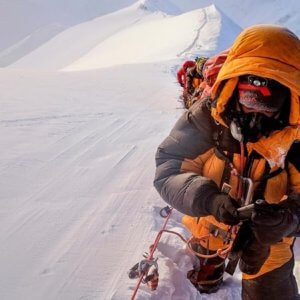
Climbers on the highest mountains in the world, such as Mount Everest, need additional oxygen for the thin air
The training of saturation divers like Lemons can also inadvertently teach their bodies to cope with extreme situations. Scientists at the Norwegian University of Science and Technology (NTNU) in Trondheim have found that saturating divers adapt to the extreme environment in which they work by changing the genetic activity of their blood cells.
"We have seen a significant change in genetic oxygen transfer programs," says Ingrid Eftedal, head of the research group for barophysiology at NTNU. Oxygen is distributed throughout our body in hemoglobin - a molecule found in our red blood cells. "We found that gene activity at all levels of oxygen transfer (from hemoglobin to red blood cell production and activity) is suppressed during saturation diving," adds Eftedal.
Together with his colleagues, they believe it could be a reaction to the high concentrations of oxygen they inhale when they are underwater. It is possible that slowing the transport of oxygen in Lemons' body allowed his meager supplies to last longer. Pre-dive exercise has also been shown to reduce the risk of caisson disease.
Studies on indigenous people who dive without oxygen equipment have also shown how much the human body can adapt to life without oxygen. People in Bajau, Indonesia can dive to a depth of up to 70 meters in one breath while hunting with a harpoon.
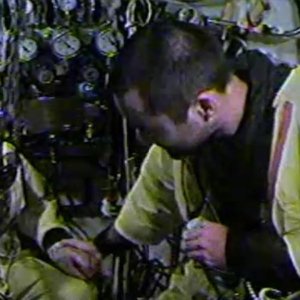
Lemons says he doesn't remember anything since he last breathed until he regained consciousness on board the diving bell
Melissa Ilardo, an evolutionary geneticist at the University of Utah, found that the Bajau people had genetically evolved so that their spleens were 50% larger than their continental neighbors.
Larger spleens are believed to have increased oxygen levels in the Bajau people, and can hold their breath longer
The spleen is believed to play a key role in free diving. "There is something called a mammalian dive reflex that is triggered by a combination of breath hold and immersion in water," Ilardo says. “One of the effects of the diving reflex is the contraction of the spleen.” The spleen acts as a reservoir for oxygen-rich red blood cells. During its contraction, these red blood cells are forced into circulation, increasing the amount of oxygen. This can be considered a biological diving bomb. "
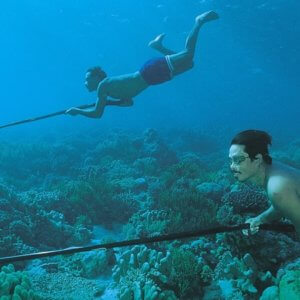
Traditional Bajau divers in Indonesia have developed enlarged spleens, allowing them to spend longer time underwater
It is believed that thanks to larger spleens, the people of Bajau benefit from a higher supply of oxygenated blood and can hold their breath longer. One Bajau diver Melissa Ilardo reportedly spent 13 minutes underwater.
Lemons returned to diving about three weeks after the accident - to finish the job they had begun in the same spot where the accident had occurred to him. He also married Morag and they have a daughter together. When he thinks back about his encounter with death and miraculous survival, he does not give much credit to himself.
"One of the most important reasons I survived was the amazing people around me," he says. “In fact, I have done very little. It was the professionalism and heroism of the two who were in the water with me and everyone else aboard the ship. I was very lucky. ”

When he ran out of air, Lemons' thoughts belonged to his fiance Morag, whom he immediately married after the accident
His accident caused a number of changes in the diving community. Emergency tanks are now in use, containing 40 minutes of air, not just five. The “umbilical cords” are interwoven with light fibers so that they can be better seen underwater. The changes in Lemons' own life were not so dramatic.
"I still have to change diapers," he jokes. But his view of death has changed. “I no longer see her as something we are afraid of. It's more about what we leave here. ”
Worst case scenario
This article is part of a new BBC Future column, entitled Worst Scenarios, which deals with extreme human experience and the remarkable resilience people face in the face of adversity. Its aim is to show how people have coped with the worst events and how we can learn from their experiences.





 1
1